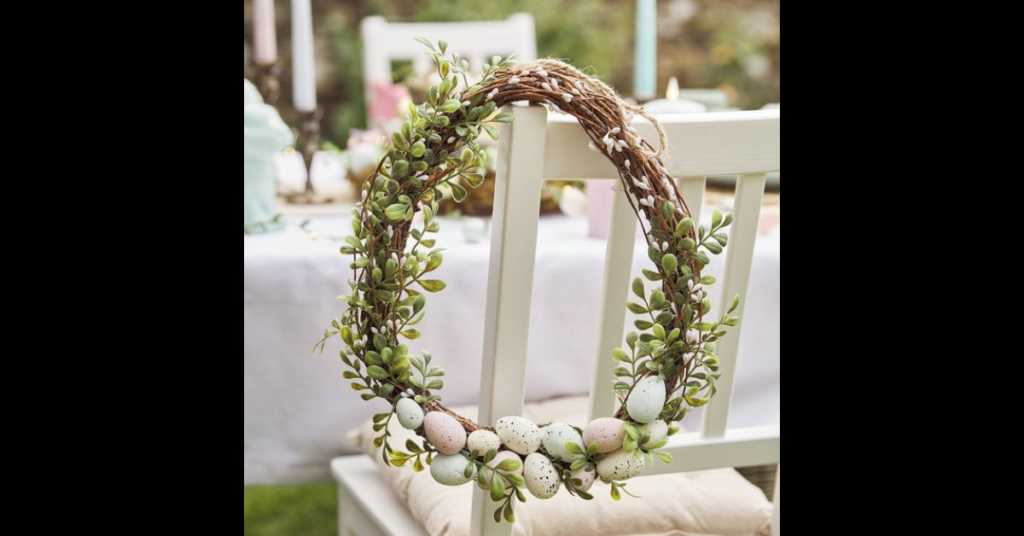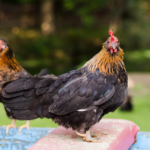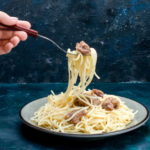Easter is a time of renewal and celebration, often marked by vibrant decorations that capture the spirit of spring and rebirth. Among the most cherished of these decorations are Easter wreaths, which adorn doors and walls, symbolizing the festive occasion. This comprehensive essay explores the history, symbolism, types, crafting techniques, materials, and commercial aspects of Easter wreaths, offering a detailed insight into their enduring popularity.
History and Symbolism of Easter Wreaths
Historical Origins
The tradition of wreaths dates back to ancient civilizations. In Ancient Greece and Rome, wreaths were used as symbols of victory and honor. They were often worn as crowns or hung on doors during festivals and important events. The concept of the wreath as a symbol of eternity, due to its circular shape, has also been significant in various cultures.
Easter wreaths, specifically, evolved from these ancient traditions and were influenced by Christian symbolism. The circular shape of the wreath represents eternity and the never-ending cycle of life and rebirth, which aligns with the themes of Easter. The use of greenery and flowers in these wreaths symbolizes spring and the resurrection of Jesus Christ, making them a fitting decoration for the holiday.
Symbolism
Easter wreaths carry deep symbolic meanings. The circular shape is a universal symbol of eternity, unity, and the infinite nature of life. For Christians, it also represents the crown of thorns worn by Jesus during his crucifixion, transforming into a symbol of victory over death through his resurrection.
The materials used in Easter wreaths further enhance their symbolic value. For example:
- Evergreens: Represent eternal life and renewal.
- Flowers: Especially lilies and tulips, symbolize purity, new beginnings, and the resurrection.
- Eggs: Often incorporated into Easter wreaths, eggs symbolize new life and rebirth.
- Ribbons and Bows: Add color and festivity, representing joy and celebration.
Types of Easter Wreaths
Easter wreaths come in various styles, each reflecting different aspects of the holiday’s themes and the personal tastes of the decorator.
Traditional Easter Wreaths
Traditional Easter wreaths often feature classic elements such as:
- Evergreens: Providing a lush, green base that symbolizes life and continuity.
- Spring Flowers: Including lilies, tulips, daffodils, and hyacinths, which are commonly associated with Easter.
- Eggs: Real or artificial, often dyed in vibrant colors, representing new life.
These wreaths might also include religious symbols like crosses or images of lambs, highlighting the Christian aspect of Easter.
Modern and Contemporary Wreaths
Modern Easter wreaths take a more creative and varied approach, incorporating a wide range of materials and styles:
- Minimalist Wreaths: Use simple, elegant designs with a few key elements like a single type of flower or a monochromatic color scheme.
- Themed Wreaths: Focus on specific themes such as Easter bunnies, pastel colors, or whimsical elements like carrots and chicks.
- DIY and Upcycled Wreaths: Emphasize sustainability by using recycled materials, homemade decorations, and eco-friendly components.
Rustic and Natural Wreaths
Rustic Easter wreaths embrace the natural beauty of raw materials. These wreaths might include:
- Twigs and Branches: Forming the base structure.
- Dried Flowers and Herbs: Adding natural color and fragrance.
- Natural Accents: Such as feathers, moss, and pinecones, creating a woodland or farmhouse aesthetic.
Floral and Botanical Wreaths
Floral wreaths are especially popular for Easter, celebrating the bloom of spring. These wreaths might feature:
- Live Flowers: Providing a fresh, fragrant display, although they have a limited lifespan.
- Silk or Artificial Flowers: Offering durability and a realistic appearance without the maintenance of live plants.
- Botanical Elements: Including greenery, succulents, and even fruit, adding variety and texture.
Crafting Techniques and Materials
Creating an Easter wreath can be a rewarding and enjoyable activity. Here, we explore various crafting techniques and the materials commonly used.
Materials
The materials used in crafting Easter wreaths vary widely, depending on the desired style and durability of the wreath.
Natural Materials
- Fresh Flowers and Greenery: Lilies, tulips, daffodils, eucalyptus, ivy.
- Twigs and Branches: Willow, grapevine, birch.
- Dried Flowers and Herbs: Lavender, baby’s breath, rosemary.
- Natural Accents: Feathers, moss, pinecones.
Artificial Materials
- Silk Flowers and Greenery: Durable and realistic alternatives to fresh plants.
- Plastic Eggs and Ornaments: Lightweight and colorful.
- Foam and Fabric: Used for various decorative elements.
- Ribbons and Bows: In various colors and textures.
Base Materials
- Wreath Forms: Made of wire, foam, grapevine, or straw.
- Floral Wire and Tape: Essential for securing elements.
- Hot Glue Gun: For attaching decorations securely.
Crafting Techniques
Basic Construction
- Choose a Base: Select a wreath form that matches your desired style and size.
- Prepare Materials: Gather all decorations, cutting flowers and greenery to appropriate lengths.
- Attach Greenery: Begin by attaching greenery to the base, using floral wire or hot glue.
- Add Focal Points: Place larger elements like flowers or eggs strategically around the wreath.
- Fill in Gaps: Add smaller decorations and accents to create a balanced and full appearance.
- Finishing Touches: Secure any loose elements and add final details like ribbons or bows.
Advanced Techniques
- Layering: Create depth and dimension by layering different types of greenery and flowers.
- Color Coordination: Use a color scheme to ensure harmony and cohesiveness.
- Symmetry and Balance: Distribute elements evenly to avoid a lopsided appearance.
- Theme Integration: Incorporate specific themes or motifs to personalize the wreath.
Commercial Aspects of Easter Wreaths
Easter wreaths are not only a popular DIY project but also a significant commercial product. The market for Easter wreaths encompasses a wide range of options, from mass-produced items to bespoke, handcrafted pieces.
Retail and E-Commerce
Easter wreaths are widely available in various retail settings, including:
- Department Stores: Offering a broad selection of affordable, mass-produced wreaths.
- Specialty Stores: Providing unique, high-quality wreaths often made by artisans.
- Garden Centers: Featuring wreaths with live plants and flowers.
- Online Marketplaces: Platforms like Etsy, Amazon, and individual e-commerce websites offer a vast array of options, including custom-made and personalized wreaths.
Pricing and Market Trends
The price of Easter wreaths can vary greatly, depending on factors such as materials, craftsmanship, and brand. Typical price ranges include:
- Budget Wreaths: $10 – $30, often made with artificial materials and simpler designs.
- Mid-Range Wreaths: $30 – $70, featuring a mix of artificial and natural elements, with more intricate designs.
- Premium Wreaths: $70 – $200+, handcrafted with high-quality materials and detailed craftsmanship.
Market trends for Easter wreaths reflect broader consumer preferences and seasonal influences. Trends may include:
- Eco-Friendly Options: Increasing demand for sustainable and biodegradable materials.
- Customization: Growing interest in personalized wreaths that reflect individual tastes and themes.
- Innovative Designs: Emerging trends in modern and minimalist designs, as well as themed wreaths that cater to specific decor styles.
Marketing and Promotion
Effective marketing strategies for Easter wreaths involve showcasing their aesthetic appeal and symbolic significance. Key marketing approaches include:
- Seasonal Displays: In-store and online displays that highlight the beauty and festive nature of Easter wreaths.
- Social Media Campaigns: Utilizing platforms like Instagram, Pinterest, and Facebook to share images, DIY tutorials, and customer testimonials.
- Collaborations and Sponsorships: Partnering with influencers, bloggers, and home decor experts to reach a wider audience.
- Workshops and Events: Hosting wreath-making workshops and events to engage customers and promote products.
Challenges and Opportunities
The commercial market for Easter wreaths presents both challenges and opportunities:
- Seasonal Demand: The short seasonal window for Easter wreaths can limit sales opportunities, requiring effective inventory and marketing management.
- Competition: A crowded market with many retailers offering similar products necessitates differentiation through unique designs and high-quality materials.
- Sustainability: Increasing consumer awareness of environmental issues creates opportunities for brands that prioritize eco-friendly materials and practices.
Cultural and Regional Variations
Easter wreath traditions and styles can vary significantly across different cultures and regions, reflecting local customs, materials, and aesthetic preferences.
North America
In North America, Easter wreaths are a popular decoration, often featuring bright colors, pastel shades, and a mix of artificial and natural elements. Common themes include:
- Easter Bunnies and Eggs: Representing fertility and new life.
- Spring Flowers: Such as lilies, tulips, and daffodils, symbolizing renewal and growth.
- Religious Symbols: Crosses and lambs, highlighting the Christian significance of Easter.
Europe
European Easter wreaths often reflect traditional and rustic styles, with a focus on natural materials and historical customs. Notable variations include:
- German Osternkranz: Typically made with fresh flowers, eggs, and ribbons, hung on doors or laid on tables as centerpieces.
- Scandinavian Wreaths: Featuring minimalist designs with birch branches, feathers, and simple floral accents, reflecting the region’s design aesthetics.
- Eastern European Wreaths: Incorporating intricate designs and rich cultural symbolism, often using vibrant colors and ornate decorations.
Latin America
In Latin America, Easter wreaths are influenced by the region’s vibrant culture and religious traditions. Common features include:
- Bright Colors: Reflecting the lively and festive spirit of Easter celebrations.
- Religious Icons: Integrating images of Jesus, the Virgin Mary, and other saints.
- Natural Elements: Using local flowers and greenery to create lush, colorful wreaths.
Asia
While Easter is not traditionally celebrated in many Asian countries, the influence of Western culture and globalization has introduced Easter wreaths as a decorative trend in some regions. These wreaths often combine traditional Easter symbols with local cultural elements:
- Cherry Blossoms: In Japan, Easter wreaths may incorporate cherry blossoms, symbolizing the beauty and fleeting nature of life.
- Colorful Fabrics: In countries like India, wreaths might feature vibrant fabrics and materials, blending Easter themes with local artistry.
DIY Easter Wreath Projects
Creating your own Easter wreath can be a fun and fulfilling project. Here are some DIY ideas and step-by-step guides to inspire your creativity.
Simple Floral Easter Wreath
Materials:
- Grapevine wreath form
- Fresh or silk flowers (e.g., tulips, daffodils, lilies)
- Greenery (e.g., eucalyptus, ivy)
- Floral wire and tape
- Ribbon for hanging
Instructions:
- Prepare the Flowers and Greenery: Cut the stems to about 6 inches in length.
- Attach Greenery: Secure greenery to the wreath form using floral wire, covering the base evenly.
- Add Flowers: Insert flower stems into the greenery, securing with floral tape as needed. Arrange in clusters or evenly spaced around the wreath.
- Finishing Touches: Attach a ribbon at the top for hanging and add any additional decorations as desired.
Rustic Easter Wreath
Materials:
- Willow branch wreath form
- Dried flowers and herbs (e.g., lavender, baby’s breath, rosemary)
- Feathers, pinecones, and moss
- Hot glue gun
- Twine or jute rope for hanging
Instructions:
- Attach Dried Flowers and Herbs: Glue dried flowers and herbs to the wreath form, layering to create a natural look.
- Add Natural Accents: Glue feathers, pinecones, and moss to fill in gaps and add texture.
- Secure with Twine: Wrap twine or jute rope around the wreath form for added rustic charm and to secure any loose elements.
- Hanging Loop: Create a loop with the twine for hanging.
Modern Minimalist Easter Wreath
Materials:
- Metal hoop or wire wreath form
- Eucalyptus branches
- Single type of flower (e.g., white roses)
- Floral wire
- Simple ribbon
Instructions:
- Attach Eucalyptus: Wrap eucalyptus branches around the bottom half of the metal hoop, securing with floral wire.
- Add Flowers: Attach a few white roses or another single flower type to one side of the eucalyptus, creating an asymmetrical design.
- Add Ribbon: Tie a simple ribbon to the top of the hoop for hanging.
Conclusion
Easter wreaths are a beautiful and meaningful way to celebrate the season of renewal and rebirth. From their historical origins and symbolic significance to the wide variety of styles and crafting techniques, these decorations hold a special place in Easter traditions. Whether purchased from a store or handcrafted at home, Easter wreaths bring joy and festivity to any space. As consumer trends evolve and new creative possibilities emerge, the tradition of Easter wreaths continues to thrive, reflecting both timeless customs and contemporary innovations.







